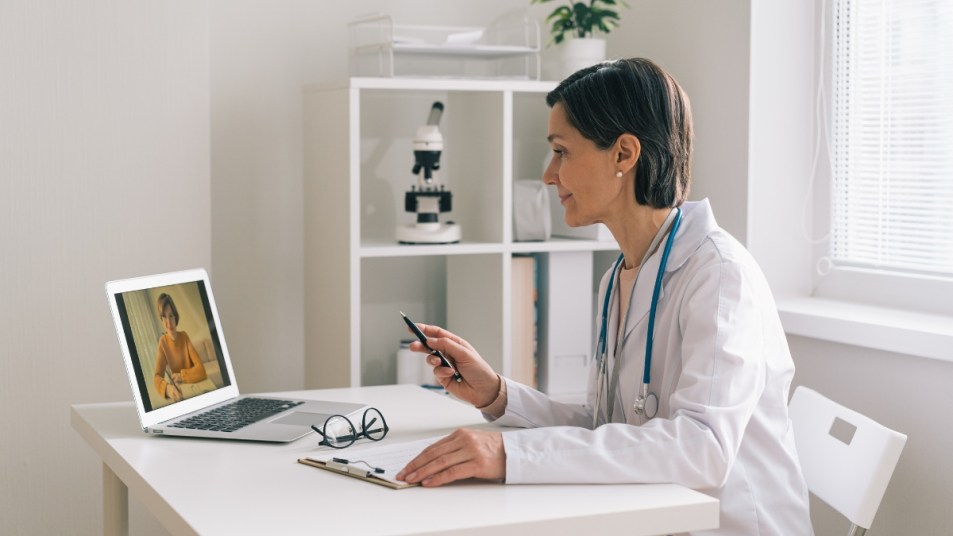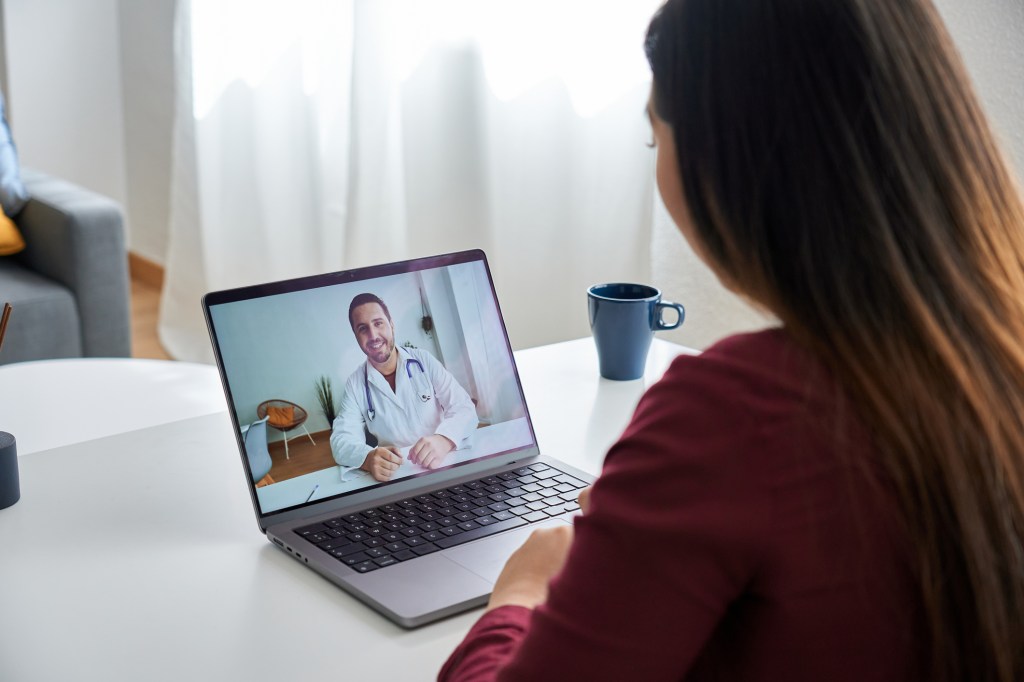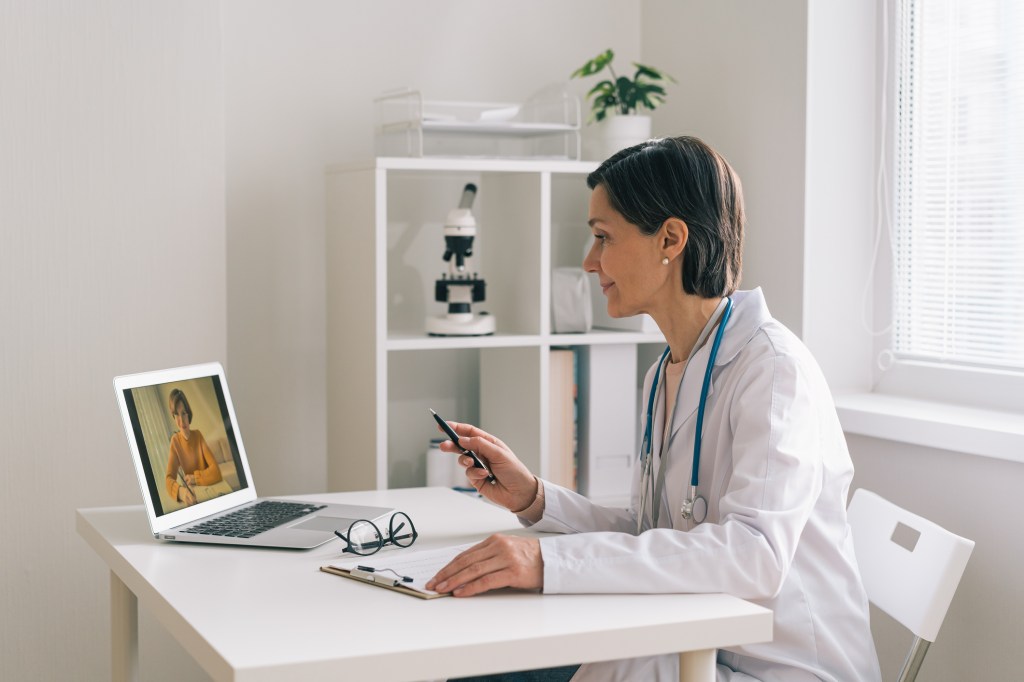Benefits of Telehealth: Top MDs Reveal When It Gets You Better Care Than In-Person Visits
Here are easy ways to reap even bigger benefits from this versatile technology

More than half of Americans used telemedicine during the pandemic, and 86% of them were highly satisfied with their care, according to a recent study in the Journal of Patient Experience. But is telehealth just a stop-gap measure suited only to unprecedented times? That’s the question Kathleen Fear, PhD, Director of Data Analytics, Health Lab, at the University of Rochester Medical Center, and her colleagues set out to answer in their new study in the journal NEJM Catalyst. “We wanted to learn if telemedicine is just a ‘good enough’ method of care in an emergency or is it something that could be patients’ first choice,” she says, adding she was pleasantly surprised to discover it was the latter. “People receiving outpatient care, for example, were far less likely to cancel appointments if they also had access to telemedicine, and the most vulnerable patients, including the elderly and underinsured, successfully used the most telehealth services.” Read on to learn more about the benefits of telehealth.

Are there any disadvantages to telehealth?
But surely there’s a downside? Not one Fear could find. “We were curious if doctors would order more lab tests to offset the fact that they weren’t seeing patients in-person, and we were again surprised to find they ordered fewer tests. This speaks to just how much of medicine is about talking to your doctor and describing what’s going on with you.” She says the biggest takeaway from her study is that telemedicine is low-risk: “You can give it a try and see if it works for you because the evidence suggests you will get what you need from it, just like an in-person appointment.” Read on to discover how telehealth is making medicine more accessible than ever, the simple ways to maximize your next virtual visit and all the benefits of telehealth you can take advantage of.
Related: 8 Smart Ways to Save Money On Healthcare
3 benefits of telehealth
The benefits of telehealth range widely and plenty. Keep reading to see why MDs recommend telehealth medicine — sometimes even more than in-person appointments. Here are three areas where it excels:
1. Virtual ob/gyns ask more questions
While there’s no substitute for in-person care when it comes to a Pap test or pelvic exam, virtual visits excel in a more under-the-radar yet no less important aspect of gynecological health: sexual function. “Telemedicine can make it easier to have discussions about intimate topics like pain during intercourse and to talk about prescriptions like vaginal estrogens as well as over-the-counter remedies like vaginal moisturizers,” says gynecologist Mary Jane Minkin, MD, co-director of the Sexuality, Intimacy and Menopause for Cancer Survivors program at the Smilow Cancer Center at Yale University.
Indeed, a recent study in The Journal of Sexual Medicine found that only about 40% of gynecologists regularly ask patients about sexual issues, making telemedicine the perfect platform to fill this healthcare gap. Dr. Minkin adds that while an in-person visit with your ob/gyn is typically a solo affair, an online session lends itself to a “group dynamic.” “We can also involve a patient’s partner more easily in an online appointment to discuss topics like problems orgasming because it can be hard to coordinate two people’s schedules in-person.”
Another common condition well-suited for telemedicine? “I almost never see anyone in-person for a UTI,” she says, adding that she has her patients describe their symptoms virtually, then she’ll send them to a lab for a urine culture, if needed. Bottom line: Whether you have intimate questions you’re more comfortable discussing remotely or believe you have a UTI or yeast infection, simply describing what you’re experiencing virtually can lead to topnotch real-world care.

2. Virtual therapists are more sustainable
The number of Americans interested in using virtual mental health appointments increased by 31% post-pandemic. And there are plenty of reasons behind the growing popularity of telemental health, says clinical psychologist Colleen Stiles-Shields, PhD, assistant professor in the department psychiatry at the University of Illinois, Chicago. “We’ve known for over a decade that mental healthcare completed over just the phone — let alone through video calls — is effective,” she confirms, adding that a study in JAMA demonstrated telephone cognitive behavioral therapy (CBT) treated depression as effectively as in-person therapy.
And how might telemental healthcare be better than in-person care? It takes away one of the biggest barriers to therapy: accessibility and sustainability. Unlike other types of medical care, like your annual physical or a treatment to remove a mole, which might necessitate just one or two visits, mental healthcare typically requires an average of 15 to 20 sessions. Its ongoing nature arguably makes long-term accessibility of greater importance. “Virtual visits reduce practical barriers to mental healthcare like the time spent commuting to your appointment and the need to find childcare or eldercare,” says Stiles-Shields.
Even more convenient? Consider mental health apps, adds psychiatrist John Torous, MD, director of the digital psychiatry division at Beth Israel Deaconess Medical Center and assistant professor of psychiatry at Harvard Medical School. “Even if you know exactly what you want from an app, it’s hard to find it in the sea of options online, which is why the site MindApps.org is so helpful,” he says. “It lets you easily pick the app, curated and vetted by experts, based on what’s most important to you, from something totally free to one that focuses on a specific strategy like mindfulness.”
3. Virtual dermatologists catch problems early
Another one of the benefits of telehealth? It can get you answers fast for any skin conditions. “The overall satisfaction with teledermatology for both patients and doctors is quite high,” confirms Sarah Perkins, MD, dermatologist in Yale Medicine’s Department of Dermatology. In fact, a recent study shows almost 60% of patients want to continue virtual dermatological visits in the wake of the pandemic.
And one of the biggest advantages of telemedicine is the little camera icon on your phone: “I have a lot of older patients who are quite tech-savvy” says Dr. Perkins. “For example, if a patient has a history of skin cancer and sees a new spot on her arm, she can send me a photo, and ask, ‘Do I need to come in?’” she explains. “Depending on the quality of the image, I can often determine if I need to see them now or if it can wait until their next scheduled checkup — I can usually ‘triage’ (assess what’s most urgent) based on that information.” This often gives patients priceless peace of mind, she adds.
Since photo quality is paramount, maximize your teledermatology appointment simply by getting close to a window and taking advantage of natural light or snapping several angles of a mole or lesion, when possible. Just contact your healthcare provider for a teledermatological appointment or consider apps like Miiskin, which lets you map moles and easily compare any changes over time or UMSkinCheck (free on iTunes or Google Play) from the University of Michigan, which makes it easy to complete your own skin self-exam.
For more health content, click through these stories:
You Don’t Have To Suffer Through Menopause: New Home Test Kits and Docs’ Self-Care Tips
6 Fast-Acting Common Cold Remedies Study-Proven to Really Work
Expert Advice for Healing the Sneaky GI Infection That’s Making Women Sick & Tired













